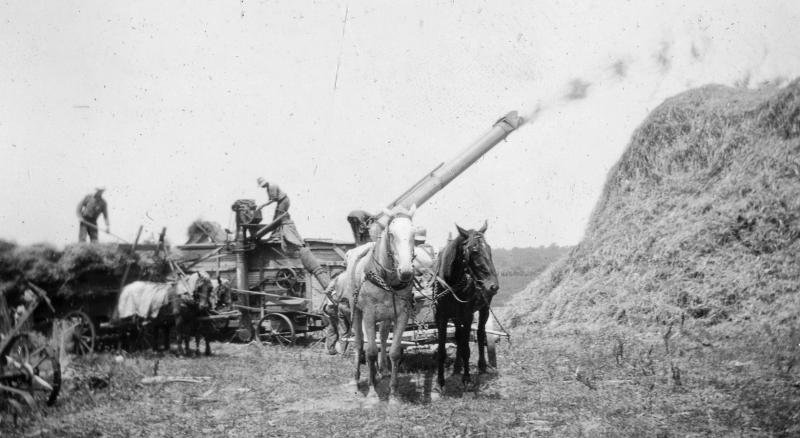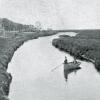Threshing wheat when it took far more man and animal power
Wheat harvesting is in full swing across Delmarva.
This photograph from the early 1930s shows a wheat threshing operation underway on a Kent County, Delaware field. In the earliest days of wheat cultivation, threshing - separating the wheat kernel from the straw stalk - was just one step in the process. The stalks were shaken and beaten with sticks until the grains gave up and separated themselves before being gathered up and ground into flour for bread. Then, in a process called winnowing, the wheat had to be separated from the chaff - the unusable matter around the kernel. Separating the wheat from the chaff grew into a commonly used phrase to describe all kinds of processes where good stuff is being separated from bad stuff.
The threshing process shown involves several people and a couple of workhorses. All that has now been replaced by a single, self-powered machine - known as a combine - operated by one person. The harvester is known as a combine because it involves a combination of processes in a single machine. In the case of wheat, the combine cuts the wheat and separates the grain from the stalks. Those stalks become straw, which is used for a variety of purposes including animal bedding, mulching and in the lawn industry for protecting newly sown grass seed.














































